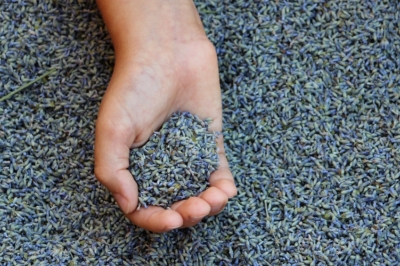Most often, lavender is propagated by cuttings or even cuttings, as this form has the higher chances of success compared to seed propagation. On the other hand, lavender plants in the garden center are quite expensive – especially if you need larger quantities – and besides, growing self-sown plants is also just fun.

In the garden, especially the true lavender sows all by itself, provided that the conditions are right. You can often find young plants in cracks between stones – this is where lavender, which is accustomed to stony ground, feels most at home. However, this self-seeding occurs far from all lavender species. If you buy lavender seeds, you will usually only get so-called “wild lavender”, which does not mean true lavender. However, the resulting plants look very different, not only in terms of their growth height and shape, but also in terms of leaf shape and color. Sometimes even the colors of the flowers differ.
Prepare seeds before sowing
If you want to use seeds from homegrown lavender plants, they need to be properly mature. This means you should cut off the faded flower stalks in the spring, rather than in the summer. To increase the germination rate, you can stratify the seeds before sowing, that is, store them in the refrigerator for one to two weeks. To do this, place the seeds on a little damp sand, which you fill in a sealable freezer bag (or other sealable container). No other preparations are necessary.
Sowing lavender
You should sow lavender directly outdoors only when frosts are no longer expected. This is usually the case from the end of May / beginning of June. However, lavender can also be pre-sown on the windowsill or in the greenhouse from February / March, then the plants grown from it will bloom in the same year and can also be harvested.
Instructions for sowing
- Fill – preferably germ-free – growing soil into pots or an indoor greenhouse.
- Low-nutrient herbal soil is best.
- You can disinfect this beforehand in the microwave.
- Moisten the soil with a spray bottle.
- Loosely scatter the seeds on the substrate and lightly press them with the help of a board.
- Stratified seeds spread along with the sand on the growing soil – as thinly as possible.
- Lavender is a light germinator and needs a bright location.
- Plantlets will germinate after one to two weeks, but may take longer.
- Prick out the plants as soon as the first leaflets have appeared after the cotyledons.
Tips & Tricks
Young lavender plants should only be planted outdoors or placed in a pot on the balcony when cold temperatures are no longer expected outside – i.e. from the end of May at the earliest, preferably even later. Older lavender is no longer so sensitive.

